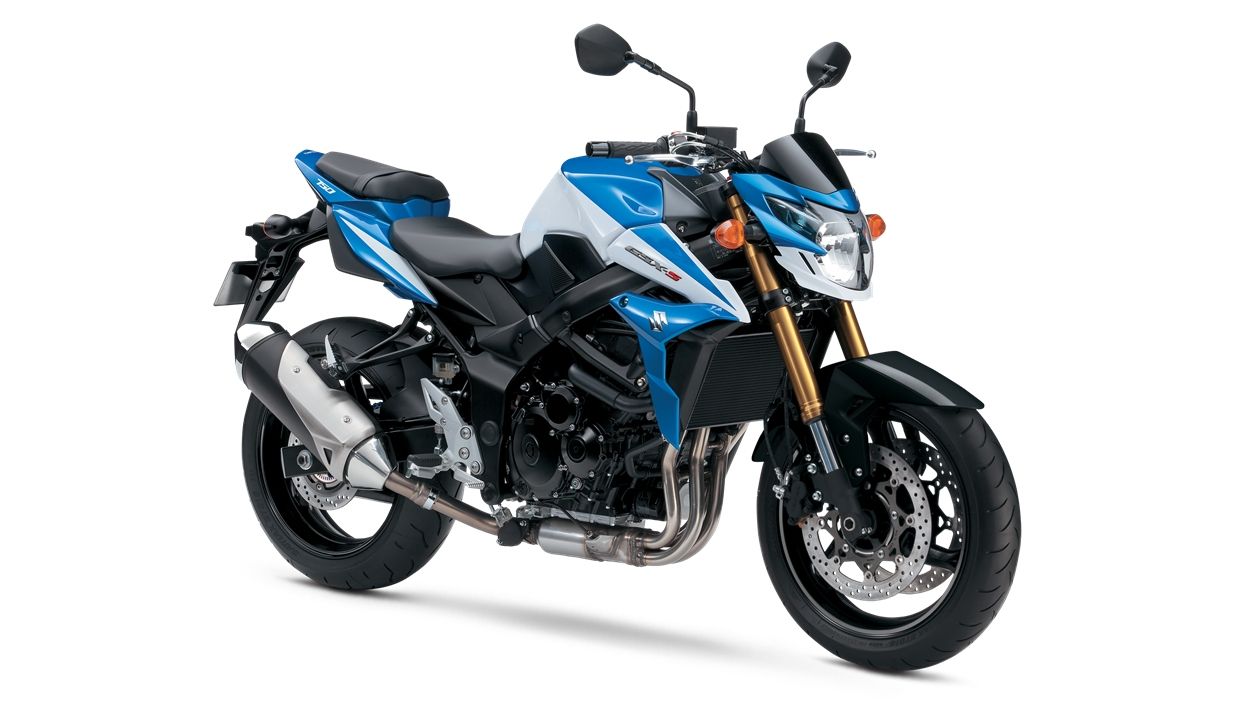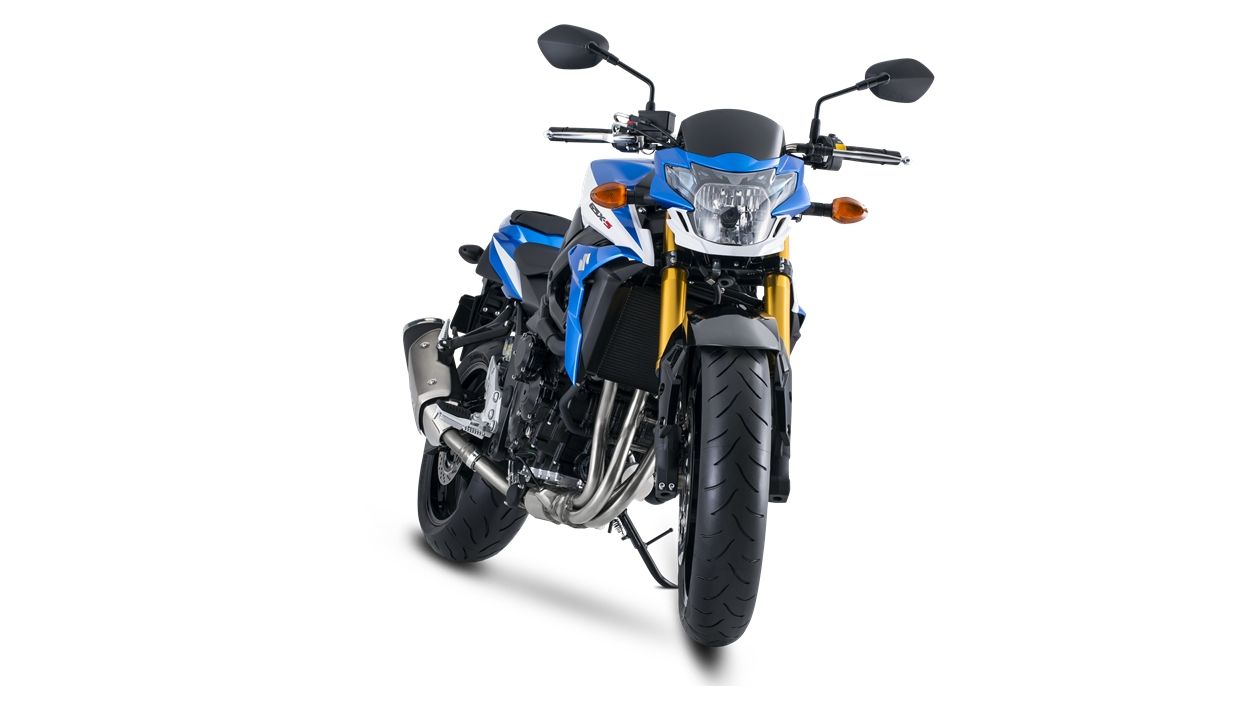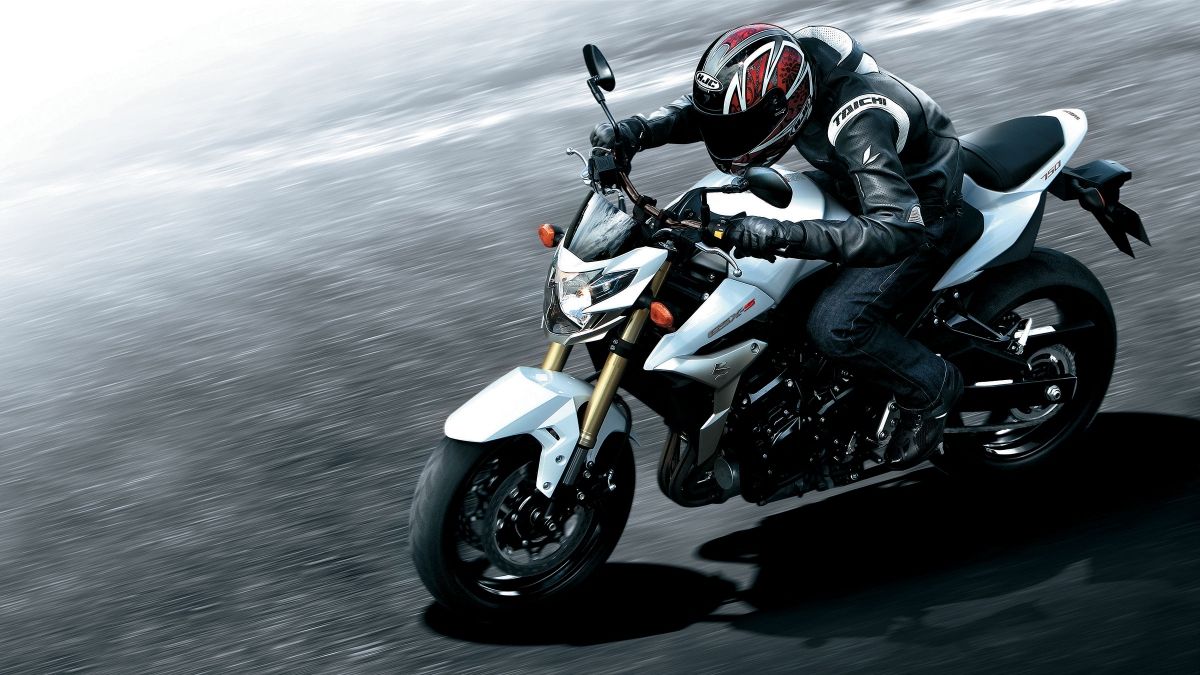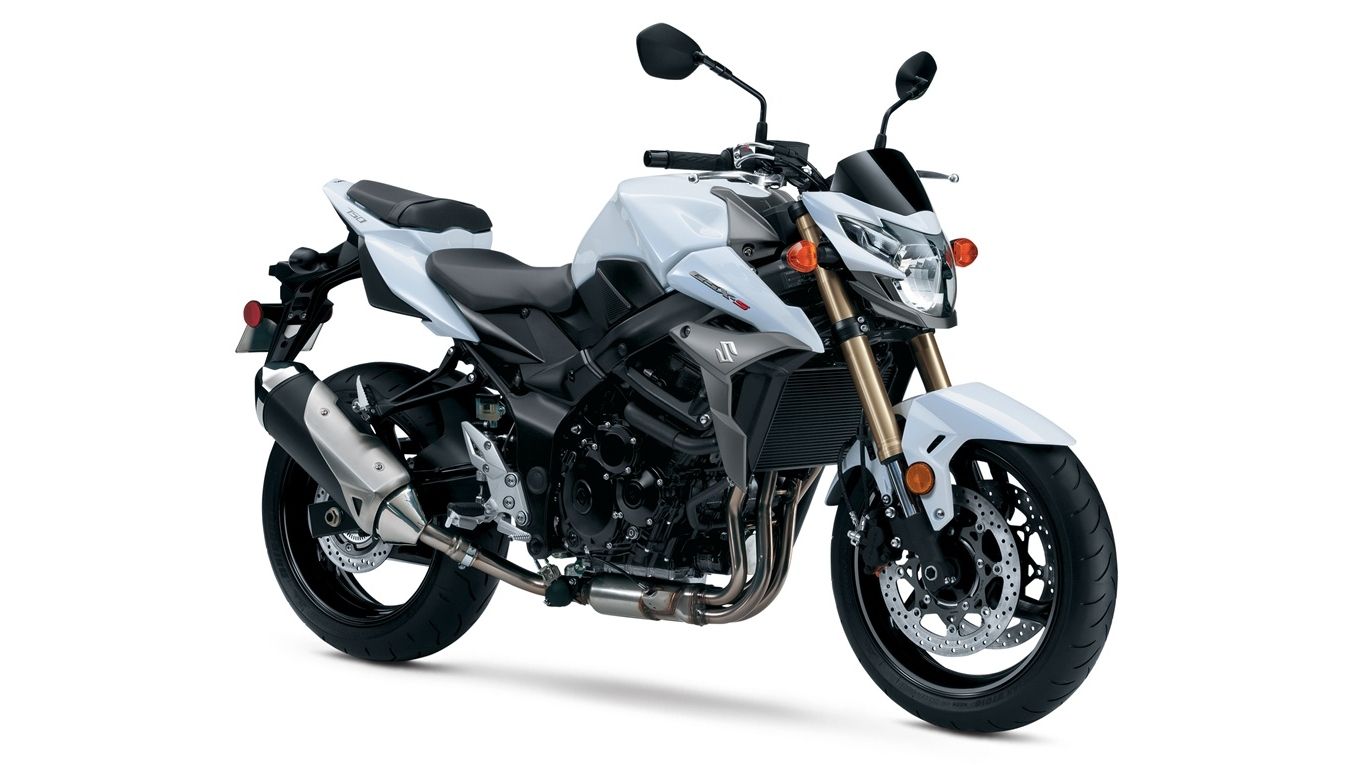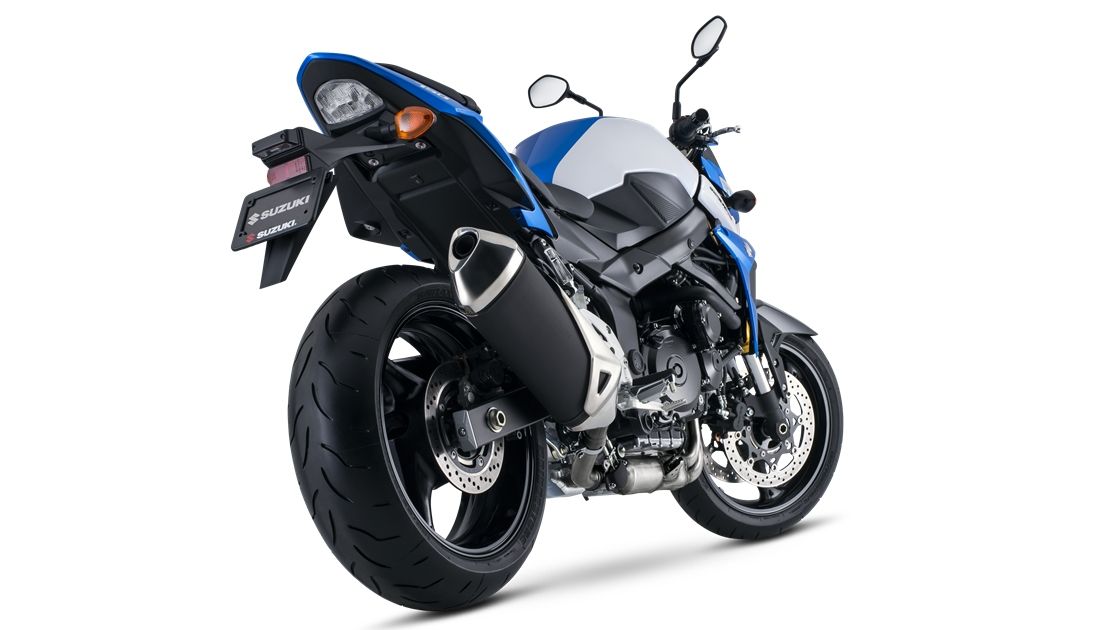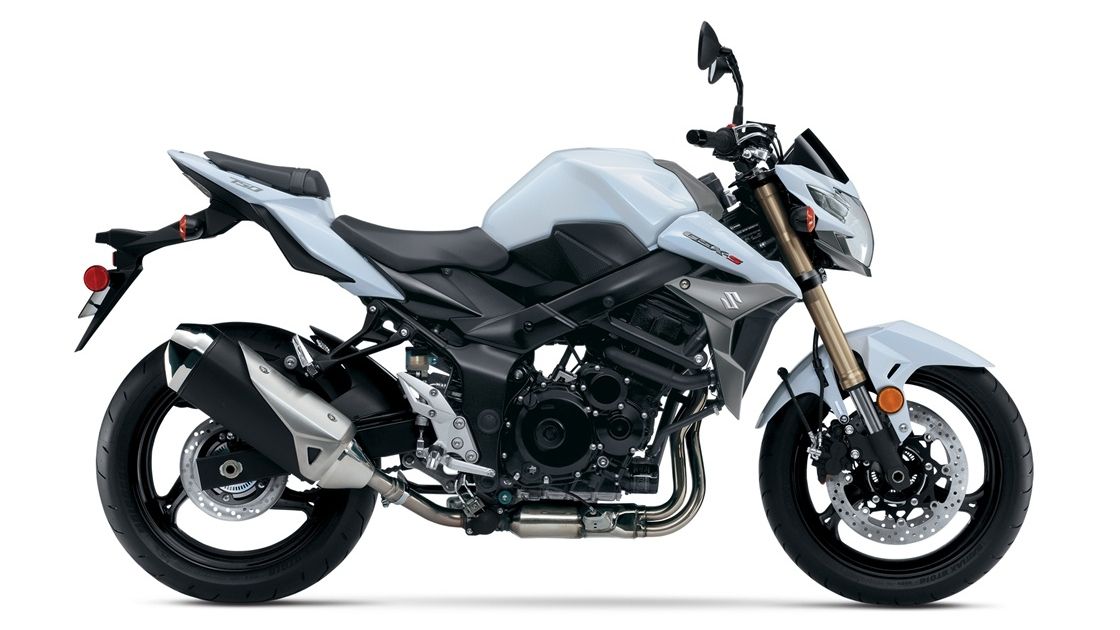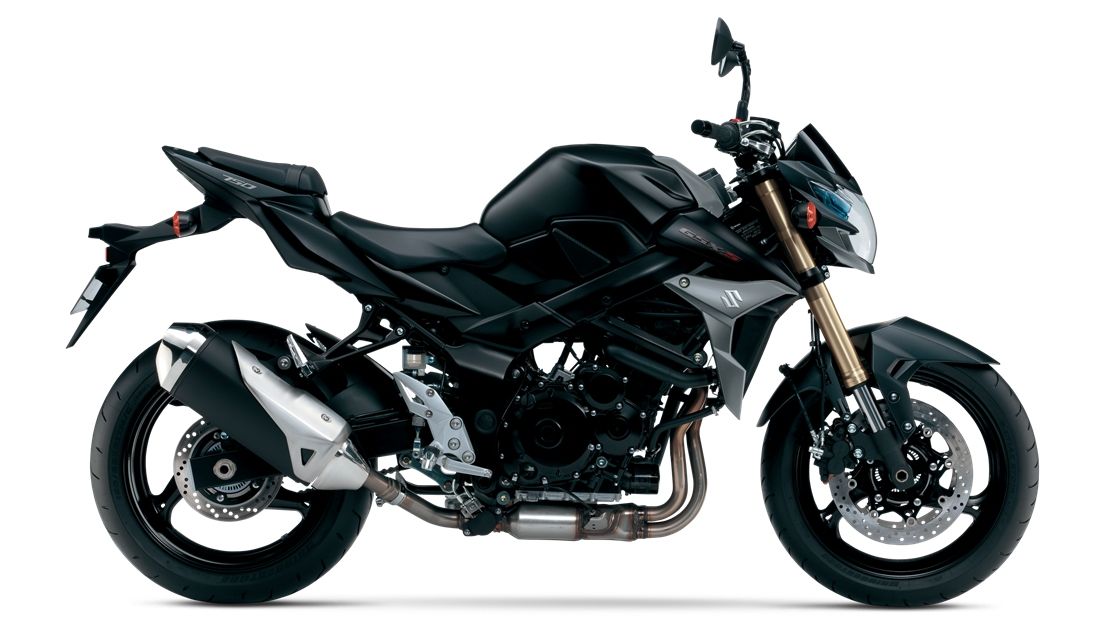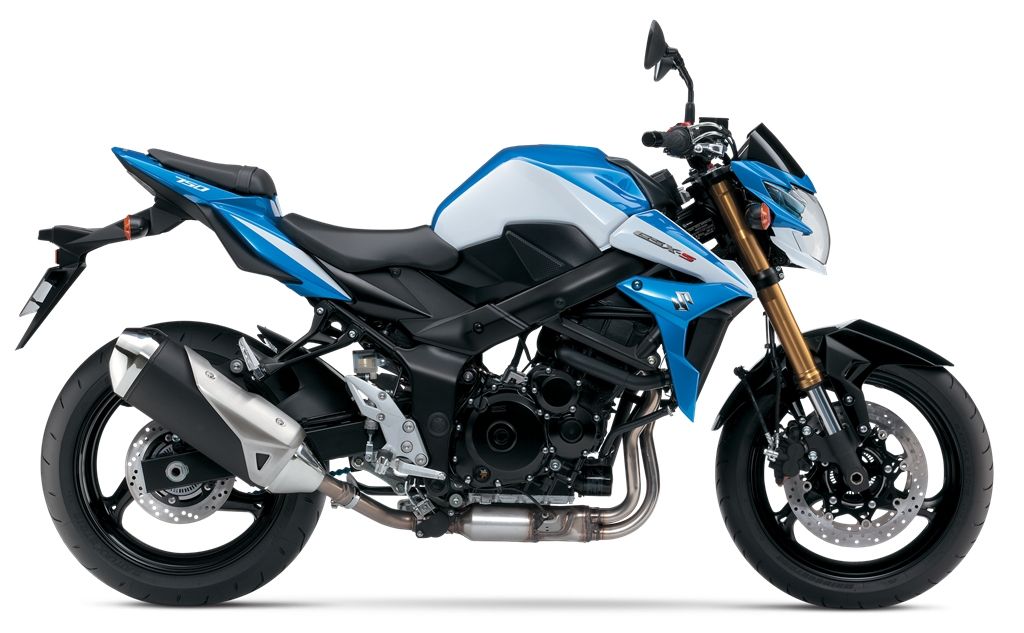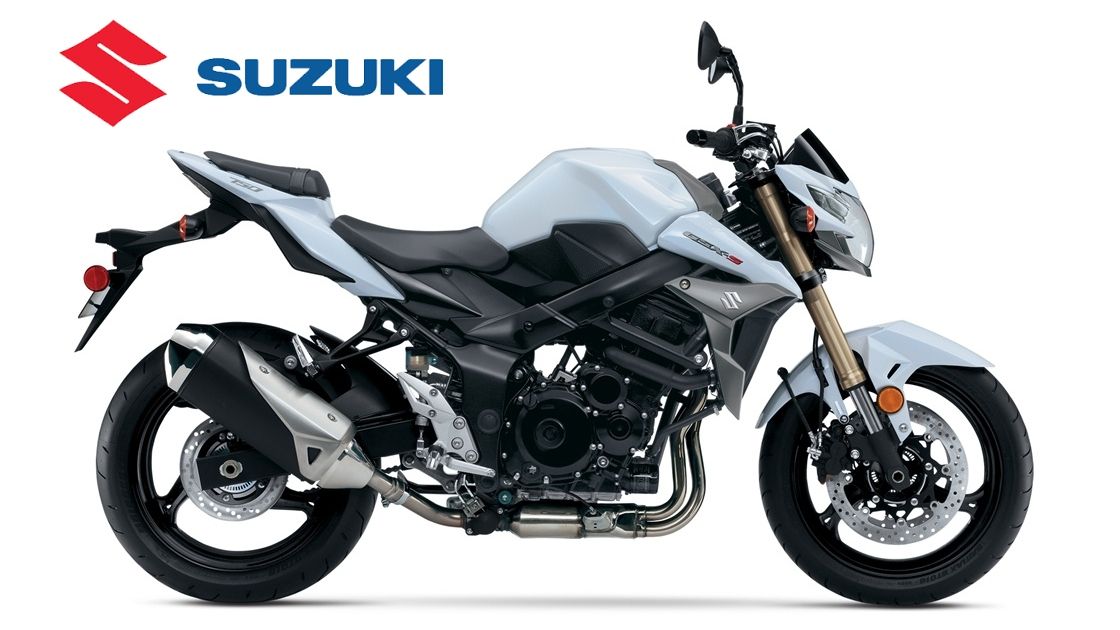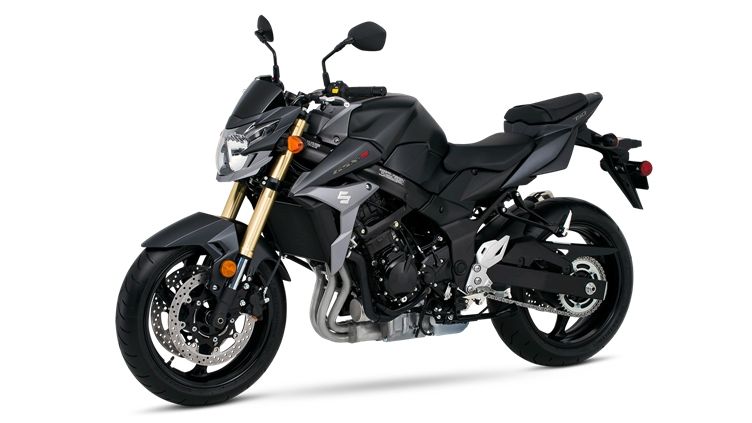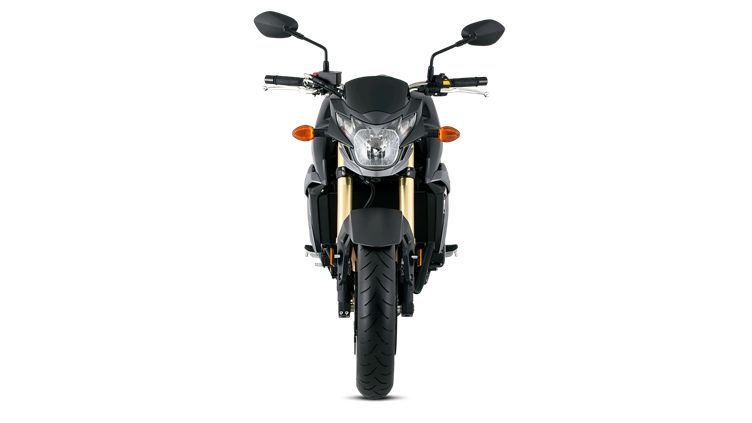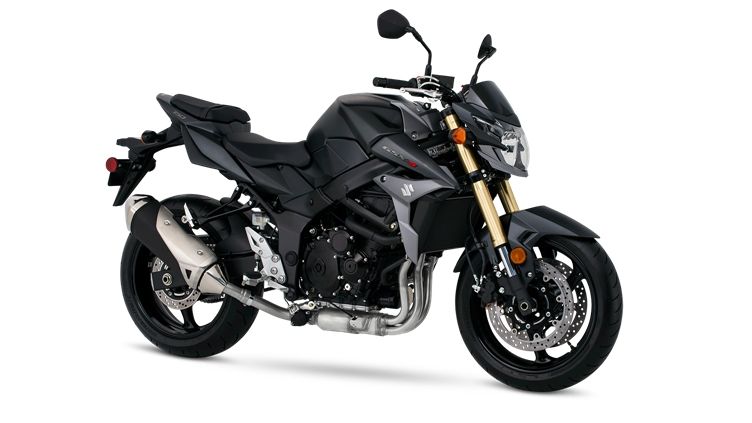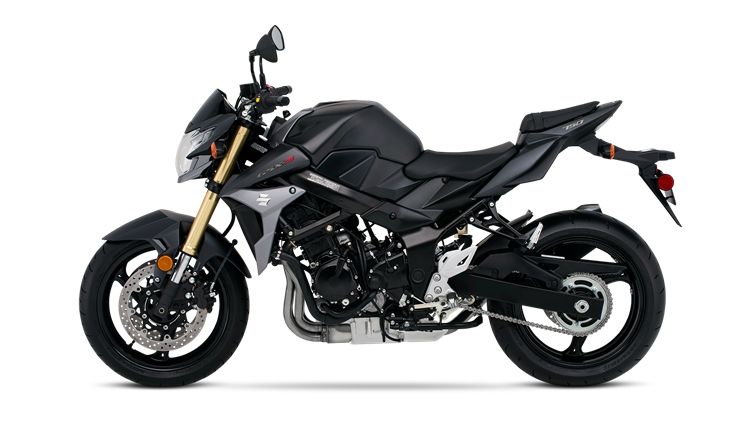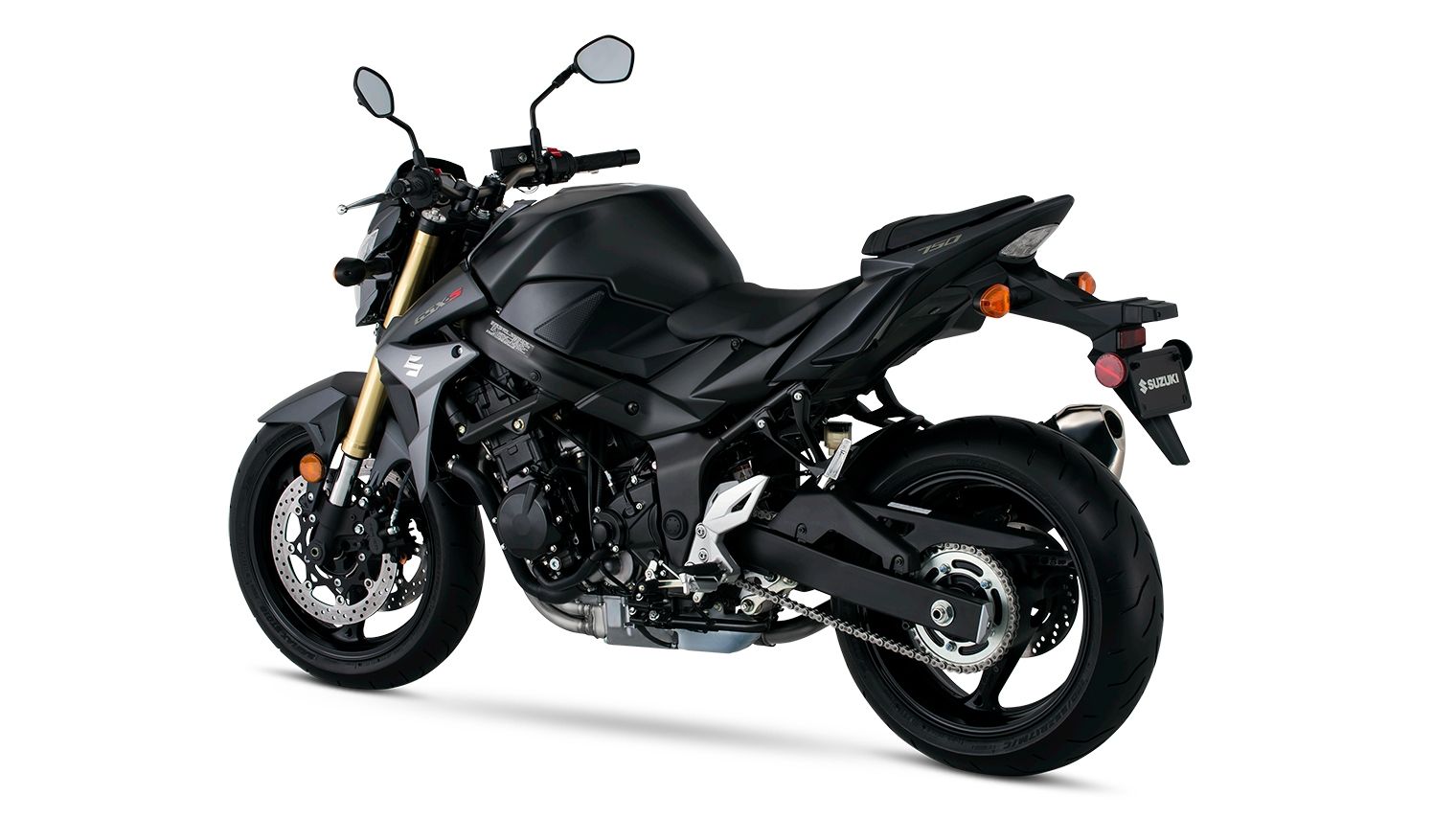Suzuki made waves around the world when it released its original GSX-R back in the mid '80s. Essentially, it was a street-legal race bike built on the proven GSX->ke2373 platform that came out in 1980, and it was a big hit with the motorcycling masses. In 2015, the GSX offspring carried on the family name with the race-centric GSX-R->ke2088 range, and the more street-errific GSX-S models. While the gixxers are true sportbikes->ke631, Suzuki bills the GSX-S as a “standard” motorcycle within the Universal Japanese Motorcycle (UJM) category, and tunes it specifically for dedicated street use.
If you think that makes this a “de-tuned” bike, I invite you to grab a fistful of throttle and get back to me. The engine runs a more street-friendly cam, and has some modifications to the intake and exhaust tracts, but it's essentially the same mill Suzuki uses to power the GSX-R750 range. Not a bad place to start, if you ask me.
Today I want to take a look at the GSX-S750 and GSX-S750Z. Suzuki carried the S750 into 2016 with naught but a difference in paint selection to choose between the years, but the “Z” version won't see any new units in the coming year.
Continue reading for my review of the Suzuki GSX-S750 and GSX-S750Z.
2015 - 2016 Suzuki GSX-S750 / GSX-S750Z
- Make: Array
- Model: 2015 - 2016 Suzuki GSX-S750 / GSX-S750Z
- Engine/Motor: inline-4
- [do not use] Vehicle Model: Array
Design
Motorcycle categories are somewhat subjective, and seem to evolve a bit over time, but to my old-school eyes this looks a heck of a lot more like a sportbike->ke631 than any true “standard” I have ever seen. Though the rider still sits in the jockey position, the rider's triangle is set up for a more upright -- and comfortable -- riding position, mainly due to the regulation handlebars that replace the race-style clip-ons used for the Gixxer.
Beyond that, the “S” range looks very much like the “R” range, if a bit more naked because of the abbreviated body fairings. It also sports a more angular panache than its racing brethren, lending it an intimidating, streetfighter->ke3429-esque look. While the visual balance isn't as extreme as, say, a sportbike proper, the tapered subframe does shift some of the visual weight forward a bit, so you do end up with something of a “crouched at the blocks” stance.
The elevated pillion area forms a ledge that should prove useful when pulling decisive holeshots or engaging in wheelie-popping shenanigannery. You can also remove said pillion seat for a solo-rider look -- the equivalent of a wedding band for your bike.
Halogen headlights provide the forward illumination, while the laser-bright LED taillamp helps increase visibility, hence safety, to the rear.
Chassis
The bones of the beast show its duplicitous nature. Suzuki married streetbike and racebike features to come up with the GSX-S750 frame design. It uses tubular-girder components as well as twin-spar features to provide the right amount of stiffness and flex for street use, and a double cradle to protect and support the engine.
Inverted front forks are fairly ubiquitous nowadays, and no longer limited to top-shelf (read: expensive) bikes, so it's no surprise that the factory used them to manage the great torque and steering forces associated with aggressive cornering on non-perfect road surfaces. The KYB usd forks come fully adjustable via adjuster knobs atop the forks where they penetrate the tripletree, so you can dial in your desired ride and adjust for changing conditions. A link-type rear suspension uses a monoshock to control the swingarm and buoy the rear end, and it comes with a seven-position spring-preload adjuster.
Dual, twin-pot front calipers bind the 310 mm brake discs, and a single-pot caliper pinches the 240 mm disc in back. While some may view the lack of augmented brakes as a negative, I don't consider the absence of brake-linking or ABS to necessarily be a bad thing. It keeps things simple, reliable and cheaper to fix if something goes awry. In addition, it forces the rider to develop and rely upon his or her own skills, something that will make them better riders in the long run, not to mention opening up the possibility of drift-type maneuvers. A 120/70ZR17 up front and 180/55ZR17 tire in the rear makes the final connection to the road, and come rated to handle more speed than my nerves can, I guarantee.
Drivetrain
Now we get to the beating heart of the ride. Suzuki likes its acronyms, and they certainly have plenty of features to carry the usual alphabet soup associated with the brand, so let's get started.
The engine itself is a four-cylinder, four-stroke, liquid-cooled mill with dual, over-head cams to actuate the four valves in each combustion chamber. Suzuki's Pulsed-secondary AIR-injection (PAIR) pumps fresh air into the waste-gas stream at the exhaust ports in the heads to help burn off any remaining free hydrocarbons before they escape the exhaust system. Additionally, the factory uses its Suzuki Exhaust Tuning (SET) to improve the bottom-end to mid-range torque and throttle response by means of a servo-actuated butterfly valve that varies exhaust-system backpressure. As someone who tweaks my exhaust “lollipops” a lot to get dialed in, I can appreciate an automatically variable system, because no matter what I do, I can't seem to tune a particular rpm range without messing up another, an unending source of irritation for me.
A digital ignition system manages the spark at the iridium spark plugs, and fuel-injected throttle bodies manage induction. The Suzuki Dual Throttle Valve (SDTV) feature contains a secondary butterfly that allows the engine itself to modulate the intake according to the needs of the moment to deliver the appropriate fuel-air charge with every stroke. I would submit that this system is no substitute for proper throttle techniques, but even the best of us could probably use a little help every now and again, and it's nice to know the engine is looking after itself.
Power from the engine flows through a six-speed transmixxer, but I must admit that I am a bit surprised and disappointed by the lack of slipper technology in the clutch pack. I consider this to be one of the most glaring omissions by Suzuki on this particular ride.
Price
The 2015 GSX-S750 rolls for $7,999, and you can get it in any color you want, as long as you want black, though the “Z” model can be had in Metallic Triton Blue/Pearl Glacial White for $8,149. Both of which are well within entry-level range, though I don't recommend this bike for a new rider. While the “Z” comes with all of the above features, the gold-anodized fork uppers, red monoshock spring, red fork adjusters and blue drive chain set it apart from its base-model sibling.
Suzuki released the 2016 version of the GXS-S750 with all the same features as the '15, but in a fetching, Pearl Glacial White colorway. Sorry, my brothers and sisters on the West Coast -- this ride is not available in any version in California.
Competitor
While there are plenty of rides that could fall in as a competitor for the GSX-S, I didn't want to go to one of the other Big-Four in Japan, so I took a look at the Italian market. Lo and behold, the Shiver 750 from Aprilia->ke1934 presented itself as a likely candidate.
Right off the bat I was struck by how similar the two are visually. OK, yeah, the under-frame exhaust on the Shiver cleans up the rear end a bit, and the offset, coil-over monoshock on the swingarm kind of leaps off the page at you, but generally, there isn't a lot to choose between the two.
Frame construction is a little different. While the GSX-S uses a cradle under the engine, the trellis frame on the Shiver uses the engine as a stressed member, which keeps the exposed frame tubing to a minimum. Unfortunately, this has the effect of leaving the engine in a proffered position with little in the way of protection. I wouldn't feel comfortable even hopping a curb on the Shiver, so a point goes to Suzuki on frame design, though to be fair, both frames benefit from the racing technology of their respective manufacturers, and so should be considered well-built in spite of my particular preferences.
While Suzuki runs its 749 cc, transverse-mount inline-four Gixxer engine, Aprilia went with its 90-degree V-twin mill with nary a cc difference between them. In spite of the wildly different engine layouts, they put out surprisingly similar performance numbers. The official numbers from Aprilia claim 95 ponies and 59.6 pound-feet of torque, while numbers from a reputable third party with access to a dynamometer report 95.3 horsepower and 52.3 pound-feet from the GSX-S750-- pretty darned close by anyone's standards.
Even with its veritable alphabet soup of features, the GSX-S mill falls a little behind the curve next to the Shiver. Aprilia integrated a Rider Mode function with the Ride-by-Wire throttle to give the rider a choice of three separate power-delivery profiles that radically alter the performance curve of the engine. I admit that I have a certain affinity for such technology, and so Aprilia gains an edge in the “fandangled contraption” department, for sure. Neither manufacturer puts any sort of gadetry in the brake system, so I won't get a chance here to gig either of them at this point for overtaking the plumbing too much. Aprilia does avail itself of the aforementioned slipper-clutch technology where Suzuki does not, and so it pads its lead in the drivetrain department.
Time for the Holy Bottom Line. Both bikes could be considered budget friendly with the base-model GSX-S at only $7,999, and the Shiver just a skosh higher at $8,699. That price difference might matter to someone hard up against their budget, but to be honest, the extra electronic wizardry on the Shiver engine more than compensates for the extra pressure on your wallet. Again, neither ride is appropriate for a first-time rider, though you could theoretically use the “Rain” mode on the Aprilia as a super-noob performance profile if you insist on buying a stupidfast bike for your first ride.
He Said
“I'm not as enamored with the “S” series as I am with the “R” models. I have ridden Gixxers, and they are truly like grabbing a tiger by the tail. Though I am more reserved in my riding than the average sportbike rider, that doesn't mean that I don't want the option of taking off like a scalded dog. Given my druthers, I'd shell out the extra four grand or so for the GSX-R750. Still, the “S” models offer much of the same looks and performance, and at a third-again cheaper, it opens up the world of sportsbikes (I don't care if Suzuki calls it a Standard or not) to buyers who might compromise by buying a lesser machine.”
She Said
My wife and fellow writer, Allyn Hinton, says, "This is a nice bike for the money, no doubt. Take the fairings off the GSX-R750 and down-tune the engine and there you go. It has a very upright riding posture that can be a bit strange for some folks and might take a little getting used to. It falls in between the FZ-07 and FZ-09 from Yamaha->ke301 as far as engine size and I might have been tempted to compare it to one of those; but putting it head-to-head with the Aprilia was a good move."
Specifications
|
Drivetrain: |
|
|
Engine: |
Four-stroke, liquid-cooled, Four-cylinder, DOHC |
|
Displacement: |
749 cc |
|
Bore: |
72.0 mm |
|
Stroke: |
46.0 mm |
|
Compression Ratio: |
12.3 : 1 |
|
Fuel System: |
Suzuki Fuel Injection |
|
Starter: |
Electric |
|
Lubrication: |
Wet sump |
|
Ignition: |
Electronic ignition (Transistorized) |
|
Transmission: |
Six-speed constant mesh |
|
Final Drive: |
Chain, RK 525SMOZ8, 112 links |
|
Chassis: |
|
|
Suspension, Front: |
Inverted telescopic, coil spring, oil damped |
|
Suspension, Rear: |
Link type, coil spring, oil damped |
|
Brakes, Front: |
Disc brake, twin |
|
Brakes, Rear: |
Disc brake |
|
Tire, Front: |
120/70ZR17 M/C (58W), tubeless type |
|
Tire, Rear: |
180/55ZR17 M/C (73W), tubeless type |
|
Dimensions: |
|
|
Length: |
(83.3 inches |
|
Width: |
30.9 inches |
|
Height: |
41.7 inches |
|
Wheelbase: |
57.1 inches |
|
Ground Clearance: |
5.7 inches |
|
Seat Height: |
32.1 inches |
|
Details: |
|
|
Fuel Tank Capacity: |
4.6 Gallons |
|
Headlight: |
12V 60/55W H4 |
|
Tail Light: |
LED |
|
Curb Weight: |
463 Pounds |
|
Warranty: |
12-month, unlimited mileage, limited warranty - Extensions available through Suzuki Extended Protection (SEP) |
|
Colors: |
|
|
2015 GSX-S750: |
Metallic Matte Black No. 2 |
|
2015 GSX-750Z: |
Metallic Triton Blue / Pearl Glacier White |
|
2016 GSX-750: |
Pearl Glacier White |
|
Price: |
|
|
2015 GSX-S750: |
$7,999 |
|
2015 GSX-750Z: |
$8,149 |
|
2016 GSX-750: |
7,999 |


